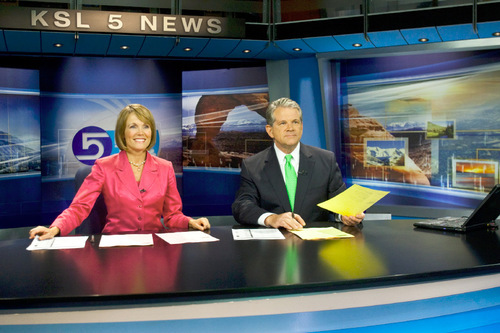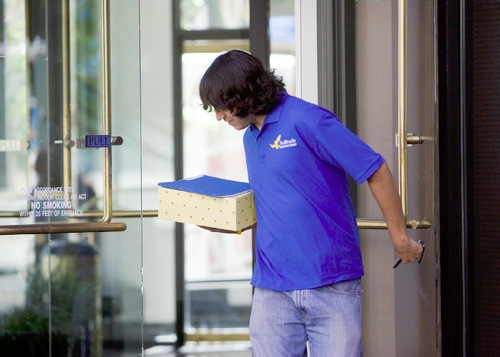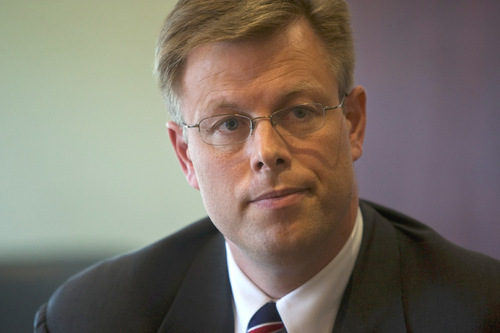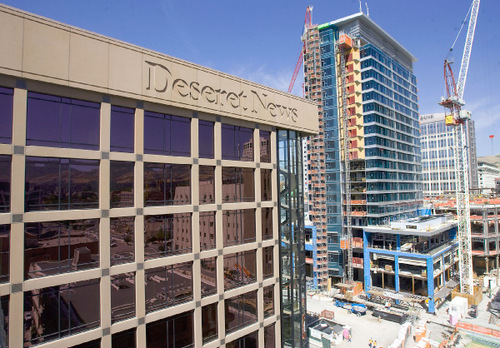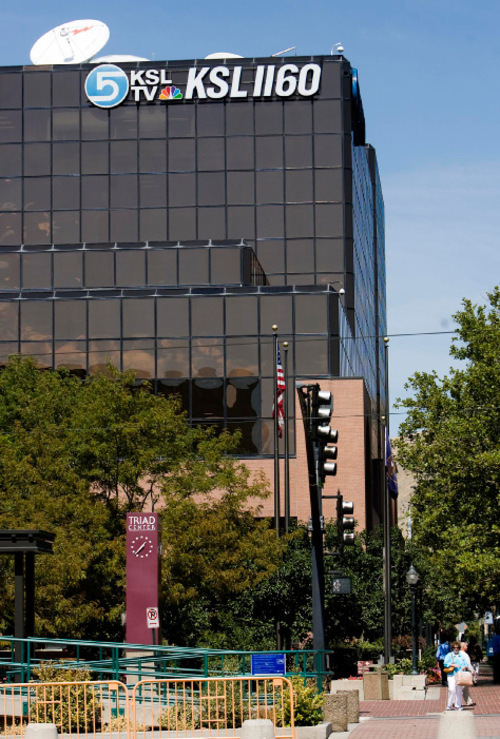This is an archived article that was published on sltrib.com in 2010, and information in the article may be outdated. It is provided only for personal research purposes and may not be reprinted.
With the announcement that the Deseret News is cutting almost half its staff and taking other steps to cope with the digital revolution, the paper is attempting to write a new chapter in Utah news media history — and possibly the rest of the United States.
Whether the gamble will pay off is uncertain. The path being blazed by the LDS Church-owned paper seems unprecedented in U.S. journalism. And some observers worry it could diminish the standards of news coverage Utahns have relied on for more than a century.
On Tuesday, the News said it was eliminating 43 percent of its news staff, affecting 57 full-time and 28 part-time employees out of its staff of roughly 197 print journalists. Most layoffs were effective immediately. Not affected was the paper's Internet news team.
At a staff meeting, new Chief Executive Officer Clark Gilbert told employees that the state's second-largest newspaper will consolidate operations with KSL-TV and radio in the fall and that Editor Joe Cannon and Publisher Jim Wall are leaving their positions for advisory roles.
—
'Depressing day' • After the somber gathering, staffers were called into one-on-one talks with management to learn whether they would be among the roughly 112 people who would stay.
One staffer, who asked not to be named, said News executives instructed affected employees to be careful about talking to other media about their situations so as not to put their severance packages at risk.
"It was a very depressing day at work. Lots of upset people and a lot of shock," the employee said.
By the end of the day, the newsroom was mostly bare, but not before Gilbert unveiled several strategies he thinks will help the News expand its audiences in Utah and around the world. This fall, the paper's remaining staff will leave their downtown building and join forces with reporters at KSL. Housed at the Triad Center west of Temple Square, the integrated staffs will easily exceed 200 journalists, making it the largest newsroom in Utah, he said.
The paper is also creating Deseret Connect, a group consisting of hundreds of contributors beyond Salt Lake City and Utah who will provide news and other information for the News and its online website. Gilbert said their work will be vetted and edited by News journalists.
The News has put together a new editorial advisory board of "thought leaders" from across the U.S., who will serve as a sounding board for editors and be encouraged to write opinion pieces.
Gilbert said a massive shift of readers from traditional newspapers to digital news sources at a time when print advertising revenues are plummeting was behind the changes. He said the News would embrace the shift in order to reach a larger audience for its information products.
"Most U.S. newsrooms have just responded to that by simply cutting costs. Very few have a plan like this, where we can expand our total news coverage and the number of stories," he said. "It's a really novel approach, and we think it's something that will be watched around the country."
Questions abound because most papers haven't figured out how to make the Internet pay. Many have gone out of business, and scores of others have made deep cuts to staffs, leading some industry observers to wonder what will happen to the U.S. democratic process because of what they see as its reliance on well-reported and well-edited information.
"You can understand why they would want to establish some new type of [business] model because the current one is seriously damaged. How this works out remains to be seen," said newspaper analyst John Morton. "This is a way, at least, of reducing the financial pain."
—
'Sad day' • Said Joel Campbell, a Brigham Young University journalism professor, former News reporter and current contributor to its weekly Mormon Times: "You're going to have less people attending city council meetings, less people looking at police records, less people serving as watchdogs. This is a sad day for any community."
Campbell fears the announcement means "less journalism and more church news and feel-good information."
Readers, too, wonder about the changes — especially Gilbert's plan to enlist hundreds of nonjournalist contributors to Deseret Connect.
"It could definitely affect the quality of their product," said Centerville resident Laurie Wirz, who once worked for Newseum, the museum of news in Washington, D.C. "But I understand why it's necessary."
—
Seeing growth • Critics don't faze Gilbert. He isn't worried that the changes may alienate people who read the News in print or online. Instead of losing readers, he expects readership to increase substantially.
"One of the things that has been made clear to us is that our readers want more than just news and information. They don't subscribe to the Deseret News just to get facts. They want something deeper, something more thoughtful, and something that reflects their values — not somebody else's — and we could not have heard that more loudly."
Tribune Editor Nancy Conway told a gathering of employees after the News' announcement that there would be no major changes in newsroom operations there. "To put your minds at ease, we don't anticipate any layoffs," Conway said. "As a matter of fact, we might hire."
Tribune Chairman and Publisher William Dean Singleton said in a letter to employees that the changes won't affect the two papers' business relationship of shared advertising and other operations that are carried out by MediaOne of Utah.
The operating agreement between the two papers expires in 2020.
—
Road already traveled • The changes at the News date back at least to February 2009, when Mark Willes, the controversial former publisher of the Los Angeles Times, was appointed president and CEO of Deseret Management Co. by the First Presidency of the LDS Church.
He immediately set about consolidating his power. A month after taking the reins, Willes launched a sweeping shake-up. The for-profit business arm of the Mormon Church would now be run by a hands-on concern instead of a passive holding company.
In September 2009, Willes created a business unit to manage the websites and other operations of digital-media properties owned by the church, including DeseretNews.com. The new unit, Deseret Digital Media, also took over the online sites of Deseret Book, KSL-TV and KSL AM/FM.
With guidance from the First Presidency, Willes began a new values-based strategy that he later said would be the basis of growth for all church-owned commercial media properties. The strategy, Willes said in January, would center on standards consistent with LDS principles but wouldn't be exclusive to the church. Instead, the standards would be universal values that appeal to religious and secular consumers.
In September, Willes brought in Gilbert, 40, to run Deseret Digital Media. The former Harvard Business School professor was given the added roles of president and CEO of the Deseret News in May, moving him ahead of Cannon and Wall.
Gilbert has frequently been described as an expert in "disruptive innovation," a business term alluding to new methods that transform or create markets no one had imagined.
In an interview with The Tribune in 2009, Willes spokes passionately about newspapers and said he was wary of the trustworthiness of the Internet. They are, the nephew of deceased LDS President Gordon B. Hinckley said, the bulwark of liberty.
On Tuesday, Willes modified his skepticism, saying that although the shift of ad revenue from papers to Internet sites had led to many of the industry's financial issues, it is the Internet that can also save newspapers.
"That is going to make it possible for us to reinvent what we do and end up with more higher-quality content than we could have with a newsroom of any size," Willes said.
Tribune reporters Lesley Mitchell and Tom Harvey contributed to this story. —
Also The Tribune to keep providing news
Deseret News changes to impact The Tribune little. › A4


